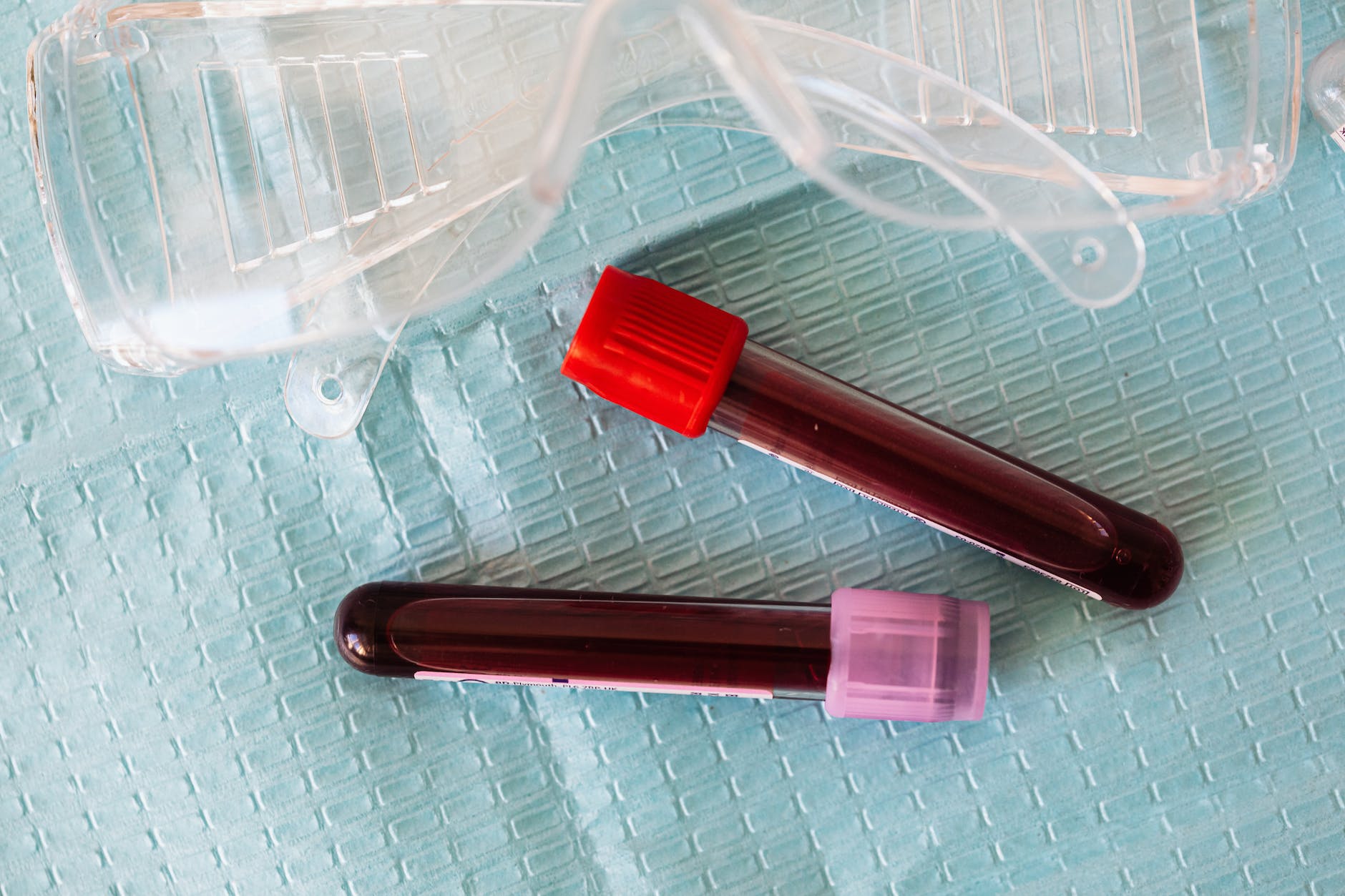Table of Contents
A recent trend observed in diabetics is high triglycerides. High triglycerides (a type of fat in the blood) may indicate that you have prediabetes or type II diabetes.
In this article, we will look at strategies for lowering triglycerides and improving diabetes treatment. We’ll look at the connection between triglycerides and diabetes, as well as how to maintain healthy triglyceride levels through dietary and lifestyle changes.
We’ll also talk about how medication can help with diabetes treatment and triglyceride levels. Finally, we’ll look at some of the best foods to include in your diet to help control triglycerides and manage diabetes.
What are triglycerides?

Triglycerides are fat molecules that circulate in your bloodstream, carrying glucose and other nutrients around the body. High levels of triglycerides occur when you consume too many calories from carbohydrates and fats – particularly saturated fats.
GET 20% OFF ON ALL HOSTING PLANS!
Unlock 20% Off on All Hosting Plans with Hostinger!
As a result, they become lodged within our arteries, causing blockages, increasing someone’s risk of heart disease, and developing type II diabetes.
Typically, food enters the digestive system and is digested into carbohydrates, proteins, and fats. These primary compounds provide energy to the cells in our bodies.
Once all the cells have received their share of energy, the excess energy is converted and stored as fats. As these molecules accumulate, they reduce the viscosity of blood and obstruct blood flow through the arteries, potentially leading to a heart attack.
One theory is that lipoprotein particles that transport triglycerides in the bloodstream (known as triglyceride-rich lipoproteins) may deposit in the heart arteries similarly to LDL.
Take the first step to a healthier life! Subscribe to munkx.com now and stay up-to-date with the latest trends, get tips on lifestyle modifications, and discover ways to improve your emotional health. Sign up today and start living your best life!
What does having high triglycerides mean?

Levels higher than 150mg/dl may increase your risk of heart disease. Triglyceride levels of 150 mg/dL or higher are also associated with metabolic syndrome.
The American Heart Association guidelines
| Level mg/dL | Level mmol/L | Interpretation |
| <150 | <1.69 | Normal range, low risk |
| 150-199 | 1.70-2.25 | Borderline high |
| 200-499 | 2.26-5.65 | High |
| >500 | >5.65 | Very high: high risk |
Chronic stress causes elevated levels of stress hormones, which can lead to elevated blood pressure, blood sugar, cholesterol, and/or triglycerides. Most people with high triglycerides have no symptoms.
However, people may experience upper abdominal pain, xanthomas (or small skin lesions), creamy white discoloration of their retinas, or irritability in some cases.
High triglycerides are frequently a symptom of conditions that increase the risk of heart disease and stroke, obesity, and metabolic syndrome, which include a group of symptoms like excess fat around the waist, high blood pressure, high triglycerides, high blood sugar, and abnormal cholesterol levels.

Download Our Free e-book Today!
Just enter your name and email ID and download our free book.
While temporary fluctuations in triglyceride levels are normal, problems that cause elevated triglyceride levels may necessitate treatment. Simple dietary and lifestyle changes may help many people lower their triglycerides.
A person can consult with a doctor to determine the best treatment options for them based on their unique circumstances.
If your triglyceride level is 500 mg/dL or higher, you may need to start triglyceride-lowering medications even before you reach lower cholesterol levels.
What is the link between high triglycerides and Diabetes?

Triglycerides and diabetes are linked because people with high triglyceride levels are more likely to develop type 2 diabetes. People who already have diabetes are more likely to develop hypertriglyceridemia (high triglyceride levels) caused by insulin production problems or by taking certain medications.
Because managing both conditions is critical for overall health, understanding the link between them can be extremely beneficial.
Diabetics often suffer from Diabetes dyslipidemia. It is defined by high fasting and postprandial triglycerides, low HDL (High-density lipo protiens) cholesterol, high LDL (Low-density lipo proteins) cholesterol, and a predominance of small dense LDL particles.
These lipid changes are the primary link between diabetes and diabetic patients’ increased cardiovascular risk.
If your triglycerides are extremely high—more than 500 mg/dL—your pancreas can suffer severely. The pancreas is an organ that aids in the conversion of food into fuel in the body. Those with high triglycerides are also at risk of developing acute pancreatitis, a severe form of inflammation.
What is the treatment for high triglycerides in diabetics?

Exercising, eating a nutritious diet rich in healthy fats, and keeping your blood sugar under control can all help lower your triglyceride levels. If these lifestyle changes do not produce the desired results, consult with your provider.
There are also medications and supplements that can assist you in lowering your triglyceride levels to a healthy level.
Exercising has been shown to reduce triglycerides. Aerobic exercise raises good cholesterol in the blood, which lowers triglycerides. Jazzercise, walking, jogging, biking, rowing, and swimming are all examples of aerobic exercise.
Those who manage their diet can naturally help keep both conditions at bay; reducing carbohydrate and saturated fat consumption while increasing fiber intake is beneficial for those with pre-diabetic or diabetic diagnoses alike.
Also read:
Glycemic Index Vs. Insulin Index: Which Diet Plan is Better For You?
A minimum of 30 minutes of physical activity per day is also recommended, along with regular screening tests every two years. This way, any potential issues caused by either condition can be identified sooner rather than later, allowing appropriate action to be taken before something worse occurs later.
In more severe cases, if lifestyle changes alone are insufficient, medication may be required; commonly, drugs such as statins are recommended, but newer treatments such as omega-fatty acids exist as well, though these do not always produce similar impactful results depending on individual circumstances surrounding their health standing prior to coming off treatment.
It’s always best practice because prevention should always be a top priority whenever possible – eating healthy foods on a regular basis and exercising when possible is highly recommended here and around the world!
Certain drinks can help you maintain a healthy cholesterol level. Green tea, pomegranate juice, citrus juice, soy milk, plant-based smoothies, and red wine are some of the best drinks for cholesterol management.
Triglyceride levels have been shown to be significantly reduced by soy protein products, fatty fish, whole grains, quinoa, avocado, coconut oil, garlic, and cruciferous vegetables.
8 steps to cut short your triglyceride count

- Stop smoking.
- Reduce Alcohol consumption.
- Aim for 30 to 60 minutes of daily physical activity.
- Even a small weight loss of 5 to 10 pounds can be beneficial.
- Reduce your intake of sugary foods.
- Reduce your intake of starches (also known as complex carbohydrates) such as rice, potatoes, pasta, bread, and tortillas.
- Canola oil, olive oil, avocado, peanuts, almonds, walnuts, sunflower seeds, and fatty fish like salmon are all examples.
- Consume a low-saturated-fat and low-trans-fat diet.
Conclusion
Finally, monitoring one’s cholesterol should continue regardless because high readings can still lead to the same indications mentioned earlier, i.e. increased risks associated with either disease respectively – these no doubt prove dangerous if subsequently left unchecked but it all starts with gaining a better understanding of said subject matter first hand, so readers should understand the triglyceride & diabetes connection beyond the theory covered today!
Managing diabetes and keeping triglyceride levels low can be a difficult journey for those affected. However, we hope that by reading our article, you have gained the knowledge and confidence to begin taking control of your health and well-being.
So don’t put it off any longer; begin today by introducing healthier eating habits, engaging in exercise, adhering to medications/treatment plans as prescribed by your doctor, and considering all the strategies listed above.
You can put yourself on the road to better health with a few simple steps.
- Mutual funds returns calculator - October 20, 2024
- PAY YOUR CAR LOAN WITHOUT INTEREST – USE THIS TRICK - October 20, 2024
- How to Save for a Car Down Payment Quickly - October 20, 2024




Pingback: Millets: The Forgotten Grain Of The Beautiful Civilized World | Munkx.com